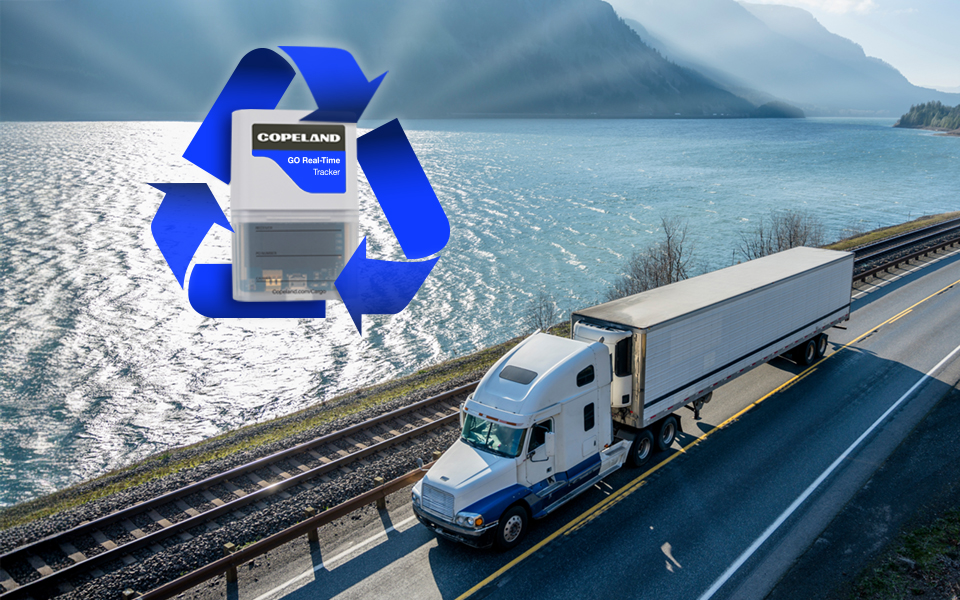*On June 1, 2023 Emerson’s Climate Technologies business became a new standalone company – Copeland. Though our name has changed, we are building on more than a century of HVACR innovation and industry leadership, and Copeland continues to offer the same products, industry stewardship, and learning opportunities you’ve grown to trust. Information found on this webpage posted before June 1, 2023 may contain our old name or branding, but you can be at ease knowing it was created with the knowledge and expertise of Copeland.

Talley leaned on his background in the natural foods grocery industry to find a better solution. There he had utilized rack refrigeration systems with minimal compressors to provide cooling for multiple fixtures. He wanted to implement a similar architecture — now commonly referred to as multiplexing — but wasn’t sure if this technology would translate into his foodservice applications. That’s when Talley tapped Refrigeration Design Technologies (RDT), experts in eco-friendly refrigerated system design, to implement a system that would take his second location to the next level of energy efficiency.
“Our goal was to create the greenest restaurant possible. We wanted to cut energy consumption in half without compromising the quality of the food we’re serving,” Talley said.
Keeping (Eco)-Cool Under Pressure
Brent Dyess, RDT’s president, knew that Talley’s lofty goals were within reach. Dyess selected RDT’s proven Eco-Cool refrigeration system based on the Copeland™ digital scroll compressor for the second Green Sage Café location. Eco-Cool was specifically designed to meet the demands of environmentally responsible foodservice outlets, relying on lean multiplex refrigeration architecture to deliver the highest degree of energy efficiency.
The Green Sage Café’s unique energy and environmental requirements made it an ideal candidate for the Eco-Cool system. The system minimizes the compressors needed to provide refrigeration, servicing eight fixtures in the café’s medium-temperature suction group with one 4 HP Copeland digital scroll compressor. With their ability to digitally modulate capacity from 10 to 100 percent, the Copeland digital scroll precise matching of refrigeration requirements to the variable operating loads typical of a foodservice application.
Surprising Energy Savings
Dyess originally estimated that the system would provide the restaurant up to 30 percent in annual energy savings. But when the Green Restaurant Association (GRA) evaluated the Green Sage Café’s environmental profile for certification purposes, they commissioned RDT to perform an independent, third-party study on the Eco-Cool system. The results were surprising.
The UL energy study simulated a foodservice application, comparing a multiplex system (with one Copeland digital scroll compressor servicing six fixtures) to a conventional system. The study replicated actual foodservice conditions, such as varying demands and frequent refrigerator door openings and closings. The data revealed that in 90 °F ambient conditions, the Copeland digital scroll-based Eco-Cool delivered 48 percent energy savings.
The multiplex refrigeration system also helped Green Sage Café owners check other significant items off their sustainability list. By placing the Eco-Cool unit outside the restaurant and removing condenser surface areas that are present on each fixture in conventional systems, they eliminated 53,856 BTUH of heat, or the equivalent of 4.5 tons of air conditioning. Not only does this contribute to the café’s eco-friendly footprint, it helps create a better dining experience for patrons and improved working conditions for the staff.
“If our customers see the value in reusing a natural by-product of the refrigeration system, then we recommend it,” Dyess said. “Green Sage Café had the vision and commitment to utilize every available natural resource.”
This blog is a summary of the article State of the Art Sustainability from our recent edition of E360 Outlook.

Copeland Aligns its Family of Brands for the Future
As a critical milestone in our journey as a standalone company, Copeland is excited to unveil a...

Recycling Program Contributes to Supply Chain Sustainability
Copeland Is Your Partner for a Greener Supply Chain Throughout the perishable food supply chain,...
Industrial Heat Pumps Deliver Sustainability, Lifecycle Benefits in Food and Beverage Industry
The food and beverage industry faces increasing pressure to reduce scope 1, 2 and 3 emissions. In...
